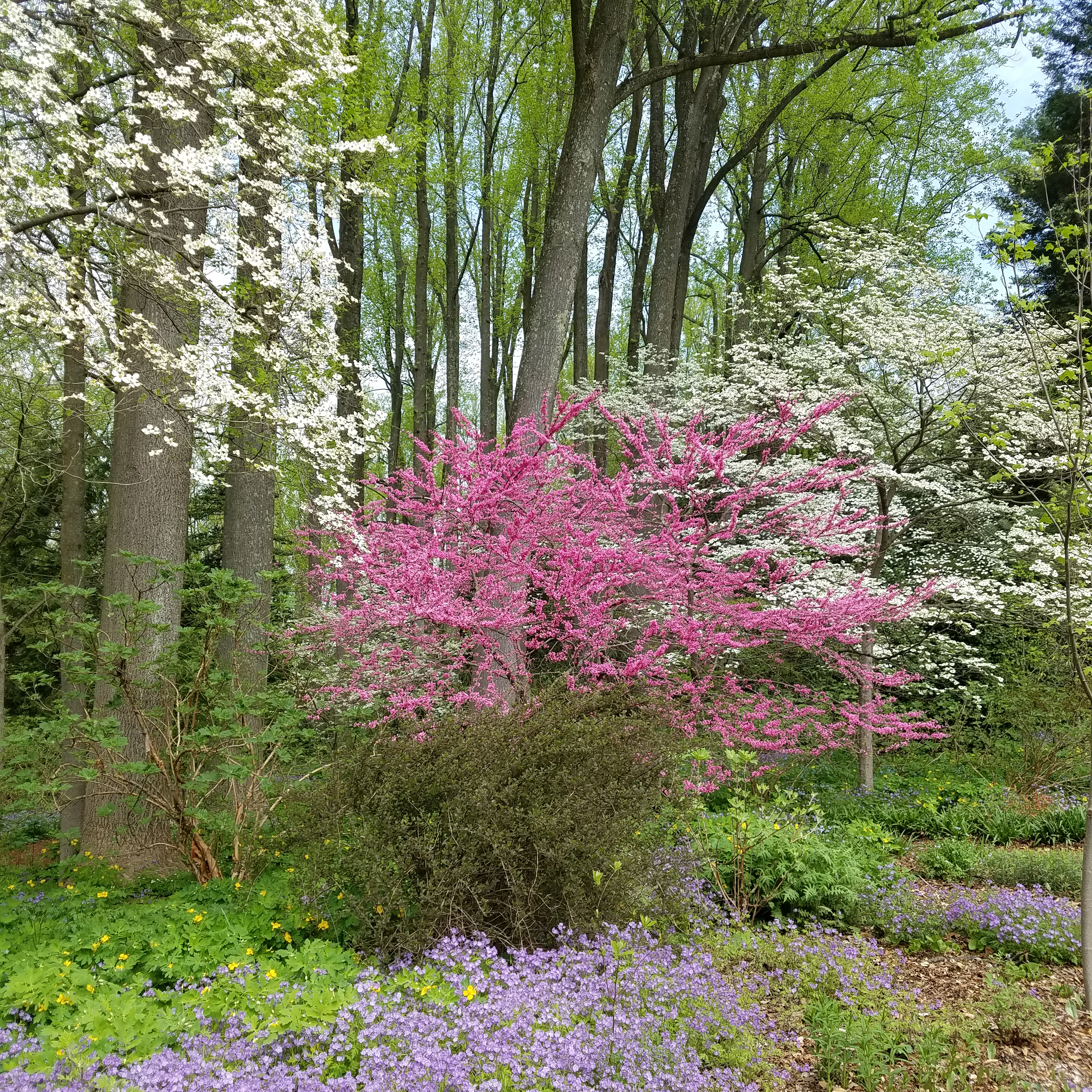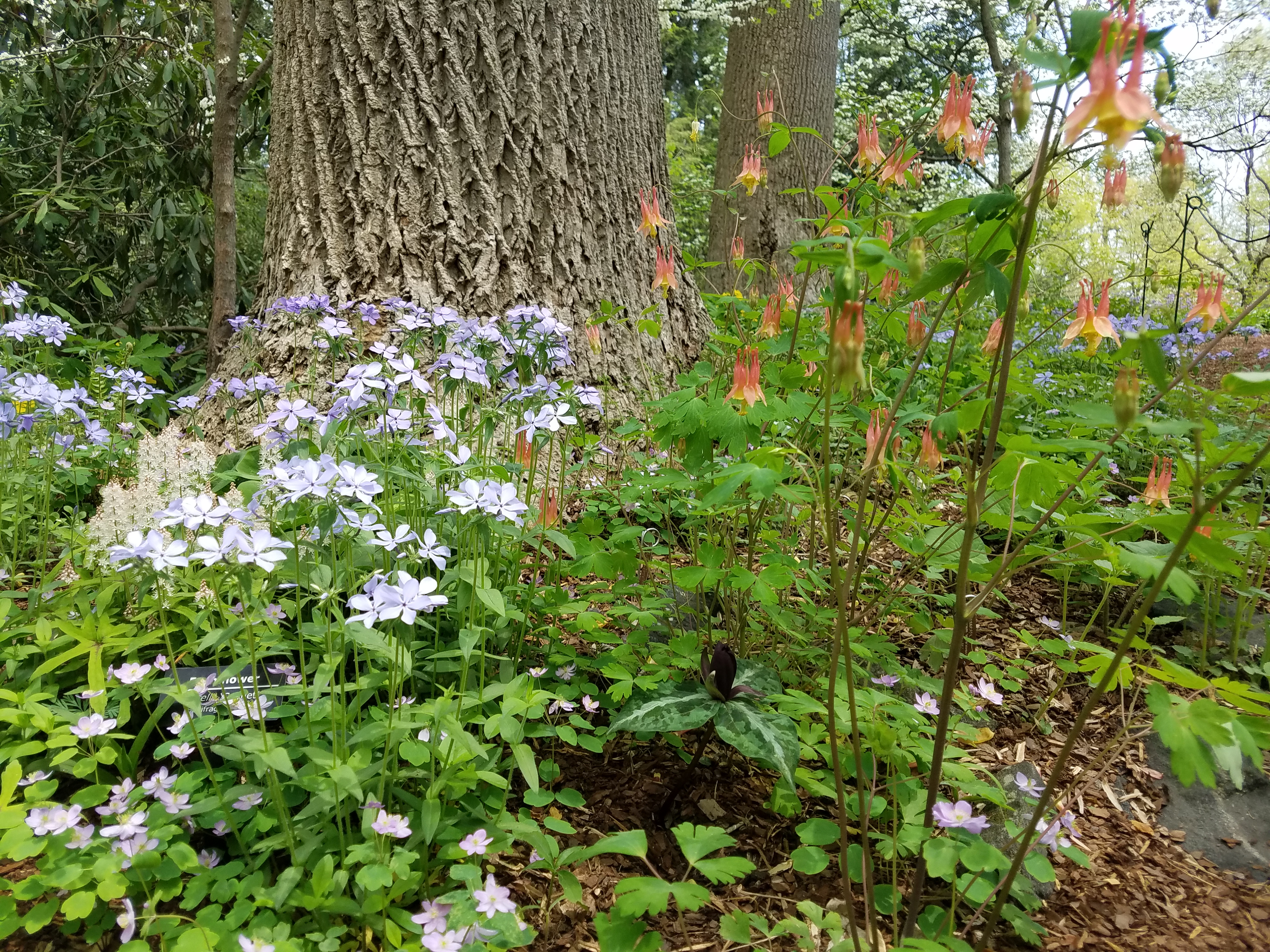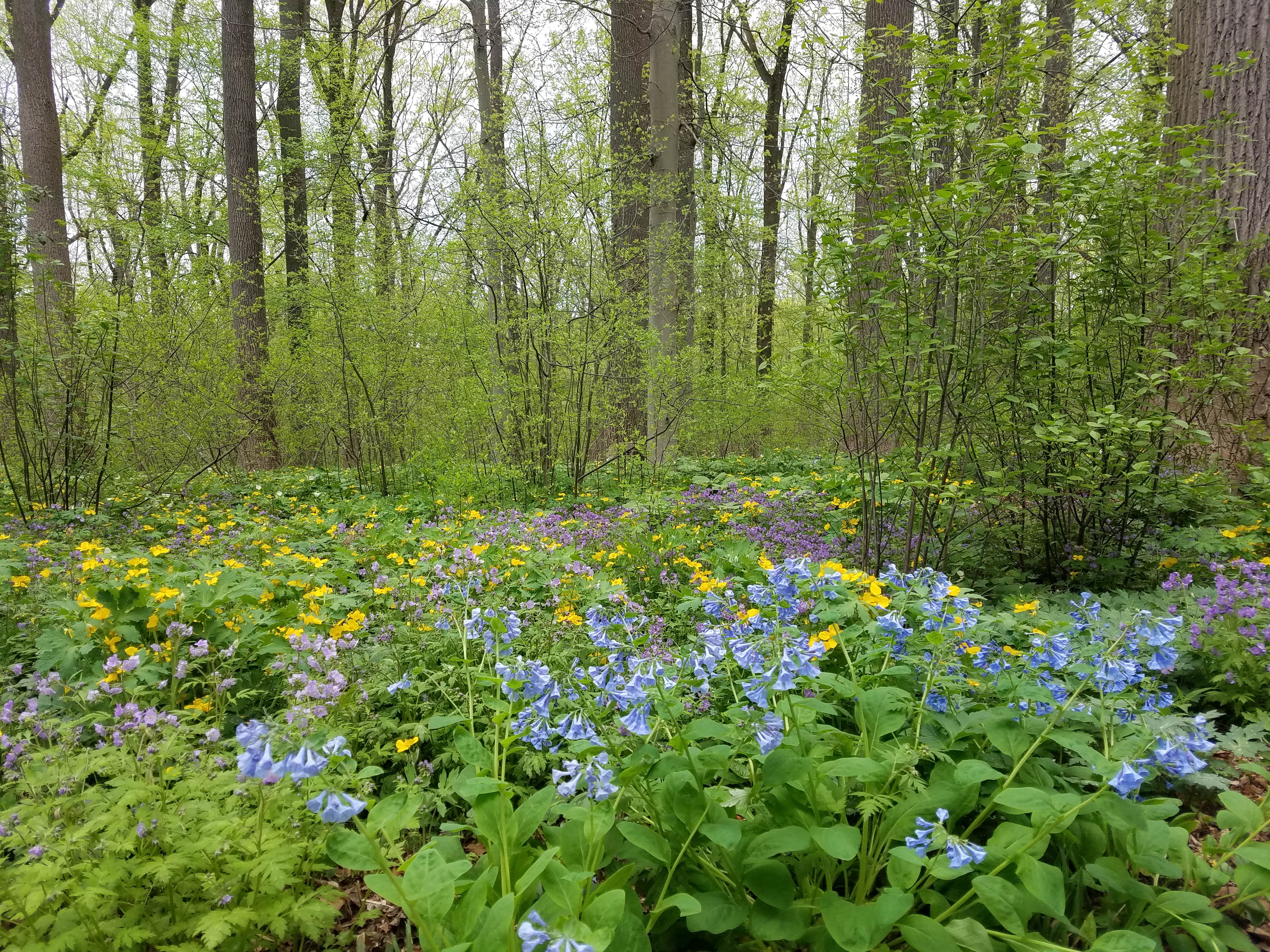Mid-Atlantic Pollinator Conservation Specialist Kelly Gill visited the Mt. Cuba Center in Hockessin, Delaware, to tour the gardens and give a talk on the best trees for bees.
Over the past few years, I have had the honor of being invited to the Mt. Cuba Center botanical garden in Hockessin, Delaware, to talk about pollinators, beneficial insects, and different steps we can all take to improve habitat for these important animals. Each time I visit, I am even more charmed than the last by the magical gardens, wildflower meadows, and woodlands. It is truly a pollinator (and people) paradise in all seasons. I always take a few pictures and share them with friends while I brag about the “view from my office.”
Friday’s presentation was on “trees for bees,” and it was timed perfectly for talking about the value of early spring–blooming trees and shrubs for pollinators and other wildlife. I parked my vehicle, gathered my things, made my way up the path, and suddenly realized I have never experienced the Mt. Cuba gardens in springtime. It was breathtaking. I almost did not make it into the building. Luckily for me, we were ending the day with a garden tour.
Some of my favorite trees for bees were in bloom, including dogwood (Cornus spp.) and redbud (Cercis canadensis). Several bees visit dogwood flowers, and some of our native mining bees (Andrena fragilis, A. integra, A. platyparia) are dogwood pollen specialists. Dogwood berries have high calcium and fat content, making them a valuable food for numerous birds—a win-win!

I love the bright flowers of redbud, which also attract a variety of visitors, including the southeastern blueberry bee (Habropoda laboriosa). This bee resembles a small bumble bee and forages primarily on blueberry plants but is often seen on redbud before blueberry is in full bloom.
Other species on my list of tress for bees includes pussy willow (Salix discolor), red maple (Acer rubrum), serviceberry (Amelanchier spp.), blueberry (Vaccinium spp.), pinxterbloom azalea (Rhododendron periclymenoides), Carolina rose (Rosa carolina), elderberry (Sambucus canadensis), flowering raspberry (Rubus odoratus), and buttonbush (Cephalanthus occidentalis). Many of these species also provide nesting sites or nest materials along with floral resources.
Although the topic of the day focused on native trees and shrubs, the spring-blooming woodland wildflowers completely stole the show in the gardens. If you live in the area or are willing to travel, I highly recommend visiting the Mt. Cuba Center for the spectacular spring display.


Resources/Further Reading
For this presentation, I touched on several of the species in the guide Delaware Native Plants for Native Bees. Check out the Xerces Society book 100 Plants to Feed the Bees to learn more about the associations between pollinators and these trees and shrubs and many other plant species.




